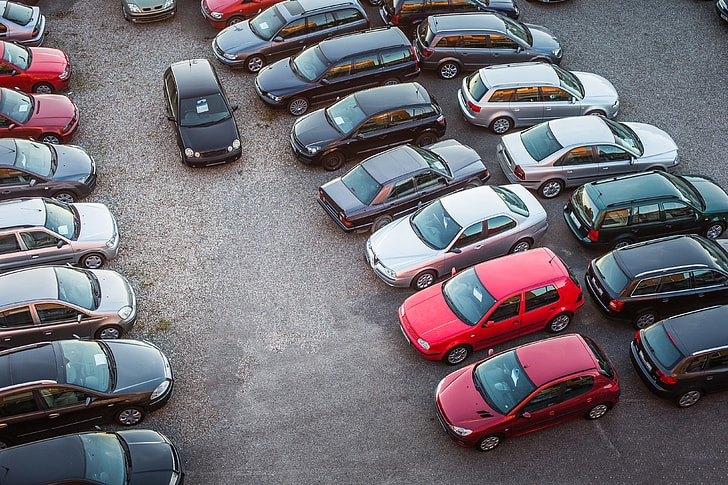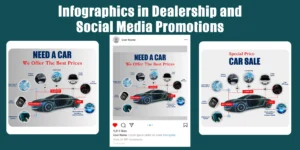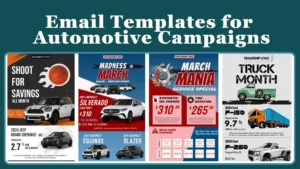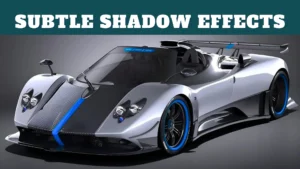Looking to boost your used car sales? The secret might just lie in high-quality images. In today’s digital world, where visual content dominates, the power of a captivating image cannot be underestimated. Studies have shown that consumers are more likely to engage with listings that feature clear and appealing photos.
When potential buyers come across your Used Cars Through High-Quality Pictures listing online, the first thing they notice is the images. This is your chance to make a great first impression and grab their attention. High-quality images create a sense of trust and professionalism, making your car more appealing to potential buyers. They want to see every angle, every detail, and every feature before they make a decision.
Not only do high-quality images help attract potential buyers, but they also increase their confidence in the condition of the vehicle. By providing clear and detailed photos, you eliminate doubts and uncertainties, making it easier for buyers to imagine themselves behind the wheel.
So, whether you’re selling through an online marketplace or your dealership’s website, invest in professional photography to showcase your used cars in the best possible light. You’ll be amazed at how high-quality images can boost your sales and attract more interested buyers.
Table of Contents
ToggleImportance of high-quality images in used car sales
In today’s digital world, where visual content dominates, the power of a captivating image cannot be underestimated. Studies have shown that consumers are more likely to engage with listings that feature clear and appealing photos. When potential buyers come across your used car listing online, the first thing they notice is the images. This is your chance to make a great first impression and grab their attention.
How high-quality images impact buyer perception
High-quality images create a sense of trust and professionalism, making your car more appealing to potential buyers. They want to see every angle, every detail, and every feature before they make a decision. By providing clear and detailed photos, you eliminate doubts and uncertainties, making it easier for buyers to imagine themselves behind the wheel.
Furthermore, high-quality images not only attract potential buyers but also increase their confidence in the condition of the vehicle. When buyers can see the car in detail, they can assess its overall condition and make an informed decision. This transparency builds trust and reduces the risk of any surprises for the buyer once they see the car in person. Investing in professional photography to showcase your used cars in the best possible light can have a significant impact on your sales.
The psychology of visual marketing in the automotive industry
Visual marketing plays a crucial role in the automotive industry. Humans are visual creatures, and we are hardwired to respond to visual stimuli. High-quality images tap into our emotions and can create a positive association with a product or service. When it comes to used car sales, potential buyers are more likely to be drawn to listings that feature visually appealing images. These images evoke desire and create a sense of aspiration, making the buyer more likely to engage with the listing and take the next step toward purchasing the car.
In addition, high-quality images can help create a sense of exclusivity and luxury. Buyers are not just looking for any used car; they want a vehicle that stands out from the crowd. By showcasing your cars with professional photography, you can highlight their unique features and present them as desirable possessions. This psychological impact can significantly influence a buyer’s decision-making process.
How to capture high-quality images of used cars
Capturing high-quality images of used cars requires attention to detail and the right equipment. Here are some tips to help you capture stunning images of your inventory:
1. Preparation: Before you start shooting, make sure the car is clean and presentable. Remove any debris, dust, or fingerprints, and consider getting the car detailed for a polished look.
2. Lighting: Lighting is crucial for capturing high-quality images. Natural light is best, so choose a location with ample sunlight. Avoid shooting in direct sunlight to prevent harsh shadows. If shooting indoors, use soft, diffused lighting to create an even and natural-looking light.
3. Composition: Pay attention to the composition of your images. Use the rule of thirds to create a balanced and visually appealing composition. Experiment with different angles and perspectives to showcase the car’s best features.
4. Focus and sharpness: Ensure your images are sharp and in focus. Use a tripod to eliminate camera shake and increase image sharpness. Pay attention to the focus points, ensuring that the car is the main subject of the image.
5. Detail shots: Capture close-up shots of important features and details, such as the interior, dashboard, and engine. These shots help potential buyers get a better understanding of the car’s condition and quality.
Remember, practice makes perfect. Experiment with different techniques and settings to find the style that best represents your brand and showcases your cars most appealingly.
Image editing and enhancement techniques for used car photos
Even with high-quality images, some editing and enhancement can take your photos to the next level. Here are some techniques to consider:
1. Color correction: Adjust the white balance and color tones to ensure an accurate representation of the car’s color.
2. Contrast and brightness: Enhance the contrast and brightness to make the image pop and create a more vibrant and dynamic look.
3. Removing imperfections: Use photo editing software to remove any minor imperfections, such as scratches or blemishes, to present the car in its best possible condition.
4. Background removal: If necessary, remove the background and replace it with a clean, neutral background to eliminate distractions and focus the viewer’s attention on the car.
5. Image resizing and cropping: Resize and crop the images to optimize them for online use and ensure fast loading times.
Remember to use editing techniques sparingly and maintain the authenticity of the car. The goal is to enhance the images, not to misrepresent the vehicle.
Optimizing image file size for website loading speed
While high-quality images are essential, it’s equally important to optimize their file size for website loading speed. Large image files can slow down your website, leading to a poor user experience and potential loss of customers. Here are some tips to optimize image file size:
1. Compression: Use image compression tools to reduce the file size without sacrificing too much image quality. Strike a balance between file size and image clarity.
2. File format: Choose the appropriate file format for your images. JPEG is the most common format for photographs, while PNG is better for images with transparency.
3. Resolution: Resize the images to the appropriate resolution for web use. Higher resolutions are not necessary for online viewing and only increase file size.
4. Lazy loading: Implement lazy loading techniques to load images only when they are visible on the screen. This reduces the initial load time of the webpage.
Remember to test the loading speed of your website after optimizing the images. A fast-loading website can significantly improve user experience and increase the chances of converting visitors into buyers.
Using professional photography services for used car inventory
If you want to take your used car listings to the next level, considering professional photography services is a wise investment. Professional photographers have the expertise, equipment, and knowledge to capture your cars most appealingly. They understand how to play with lighting, composition, and angles to highlight the unique features of each vehicle.
Hiring a professional photographer also saves you time and effort. They will handle the entire process, from preparing the car to editing the images, leaving you free to focus on other aspects of your business. Additionally, professional photographers have access to advanced editing software and techniques that can enhance your images beyond what you may be able to achieve on your own.
The role of image galleries and car video tours in online marketing
In addition to high-quality images, image galleries and car video tours play a vital role in online marketing. Image galleries allow potential buyers to view multiple photos of the car from different angles, giving them a comprehensive understanding of the vehicle’s condition and features. A well-organized image gallery can keep potential buyers engaged and increase their interest in the car.
Car video tours take the visual experience to the next level by providing a dynamic and immersive view of the vehicle. Video tours allow potential buyers to see the car in action, hear the engine sounds, and get a real sense of what it would be like to own the vehicle. This interactive experience can significantly influence a buyer’s decision-making process and increase the chances of a sale.
A/B testing the impact of high-quality images on conversion rates
To truly understand the impact of high-quality images on your used car sales, consider conducting A/B testing. A/B testing involves creating two versions of your listings, one with high-quality images and the other with lower-quality or no images. By comparing the conversion rates of these two versions, you can determine the true impact of high-quality images on your sales.
Ensure that all other elements of the listings, such as price, description, and specifications, remain the same for accurate testing. Monitor the performance of each version over a specific period, tracking the number of views, inquiries, and sales generated. This data will provide valuable insights into the effectiveness of high-quality images in driving conversions.
1. Why are pictures important when buying a used car?
Pictures play a crucial role in the process of buying a used car. They provide visual information about the car’s condition, exterior, interior, and any potential flaws or damages. By looking at the pictures, you can get a better idea of the car’s overall appearance, which helps you determine if it meets your expectations and preferences.
Moreover, pictures allow you to assess the car’s condition even before visiting the dealership or contacting the seller. This helps save time and effort by narrowing down your options based on the visual information provided. Overall, having access to clear and detailed pictures of a used car is essential in making an informed decision.
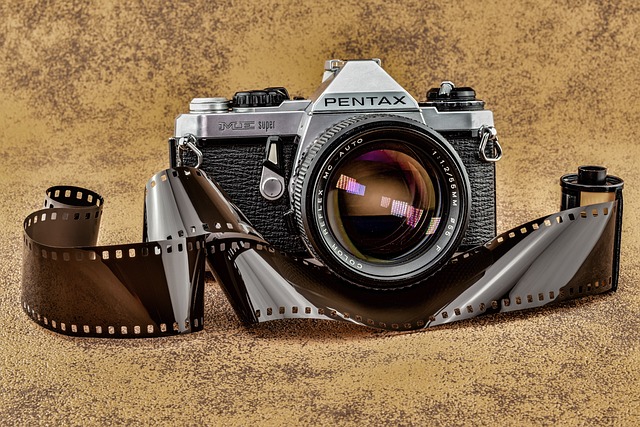
2. What should I look for in used car pictures?
When looking at used car pictures, there are several key elements you should pay attention to:
- Exterior condition: Look for any visible signs of damage, scratches, dents, or rust. Check the paintwork and ensure it is consistent across the car’s body.
- Interior condition: Assess the cleanliness and condition of the seats, dashboard, steering wheel, and other interior components. Look for any wear and tear or signs of neglect.
- Details and features: Examine the pictures closely to identify any specific features or accessories you may be interested in, such as alloy wheels, sunroof, or a touchscreen infotainment system.
- Accurate representation: Ensure that the pictures provided accurately represent the car. Look for any discrepancies between the description and the images.
By focusing on these aspects, you can make a more informed assessment of the car’s condition and suitability for your needs.
3. Can I rely solely on the pictures when buying a used car?
While pictures are an important aspect of assessing a used car, it is not advisable to rely solely on them. Pictures can provide a general overview of the car’s condition, but they may not capture all the details or potential issues.
It is always recommended to inspect the car in person and take it for a test drive before making a final decision. This allows you to assess the car’s performance, functionality, and any hidden issues that may not be visible in the pictures.
Additionally, consider requesting additional information from the seller or dealership, such as maintenance records, vehicle history reports, and any relevant documentation. This will provide a more comprehensive understanding of the car’s history and condition.
4. How many pictures should I expect when browsing used cars?
The number of pictures provided for each used car listing can vary. However, it is common for sellers or dealerships to include a minimum of 10 to 20 pictures to showcase different angles and aspects of the vehicle.
These pictures typically include exterior shots from various angles, interior shots highlighting the seats, dashboard, and features, as well as close-ups of any specific details or areas of concern. The objective is to provide potential buyers with a comprehensive visual representation of the car.
If you come across a listing with limited or no pictures, it is advisable to request additional images from the seller or consider visiting the dealership in person for a better assessment.
5. Can I request more pictures of a used car before making a decision?
Absolutely! If you feel that the provided pictures are not sufficient or if you have specific areas of interest that you would like to see in more detail, it is perfectly acceptable to request additional pictures from the seller or dealership.
Most sellers are willing to accommodate such requests to ensure transparency and help potential buyers make an informed decision. They may be able to provide more pictures of specific areas, close-ups of features, or any other details you may require.
Remember, it’s important to have a clear understanding of the car’s condition before making a purchase, and requesting additional pictures is a proactive step towards achieving that.
6. Are there any red flags to watch out for in used car pictures?
When browsing used car pictures, there are several red flags you should be cautious of:
- Poor image quality: Blurry or low-resolution pictures can indicate a lack of attention to detail or an attempt to hide potential flaws. Clear and high-quality images are more trustworthy.
- Incomplete or selective pictures: If the seller only provides pictures of certain angles or avoids showing specific areas, it may indicate an attempt to hide damage or issues.
- Unusual reflections or shadows: Look for unusual reflections or shadows that could be concealing damage or repairs. These may indicate attempts to manipulate the appearance of the car.
- Inconsistent descriptions: If the pictures do not align with the description of the car or the features mentioned, it could be a sign of misinformation or deception.
If you notice any of these red flags, it is advisable to proceed with caution and request more information or clarification from the seller before making a decision.
7. Can I trust the accuracy of used car pictures?
While most sellers and dealerships strive to provide accurate and representative pictures of their used cars, it is important to approach them with a level of skepticism.
Keep in mind that pictures can be manipulated or enhanced to make the car appear more appealing. Therefore, it is advisable to use the pictures as a starting point for evaluation and conduct further research and inspections to ensure the car’s condition matches your expectations.
Consider asking for additional pictures from different angles or requesting a video call with the seller to get a real-time view of the car. This can help establish a higher level of trust and transparency.
8. Can I negotiate the price based on the pictures?
While pictures can provide valuable information about a used car’s condition, negotiating the price based solely on the pictures may not be the most effective approach.
It is always recommended to physically inspect the car, take it for a test drive, and gather additional information before entering into price negotiations. This allows you to identify any potential issues or discrepancies that may not be apparent in the pictures.
Once you have thoroughly assessed the car’s condition and verified its market value, you can use this information as a basis for negotiation. However, it is essential to consider all factors, including the car’s history, maintenance records, and any additional features that may not be visible in the pictures.
9. Can I trust the mileage shown in the pictures?
The mileage shown in the pictures of a used car can provide a general indication of its usage, but it is always advisable to verify the mileage through other means.
Before making a purchase, request the car’s service history or vehicle maintenance records to validate the mileage. This will help ensure that the mileage shown in the pictures is accurate and matches the car’s actual usage.
Additionally, you can cross-reference the mileage displayed on the car’s odometer during an in-person inspection or through a reliable vehicle history report.
10. Is it common for used car pictures to be edited or enhanced?
It is not uncommon for used car pictures to be edited or enhanced to some extent. Sellers or dealerships may use photo editing software to improve the lighting, adjust colors, or remove minor imperfections.
While these enhancements can make the car look more appealing, it is important to remember that they may not accurately represent the car’s true condition. Therefore, it is always recommended to view the car in person and conduct a thorough inspection before making a purchase.
If you suspect that the pictures have been excessively edited or if you notice any discrepancies between the pictures and the car’s actual appearance, it is advisable to question the seller and request additional information or images.
11. Can I use used car pictures as proof of condition in case of disputes?
Used car pictures can serve as supporting evidence of a car’s condition in case of disputes, but they may not be the sole determining factor.
In situations where there is a disagreement or discrepancy regarding the car’s condition, it is advisable to gather additional evidence, such as independent inspections, expert opinions, or written statements from professionals. These additional forms of evidence can strengthen your case and provide a more comprehensive view of the car’s condition.
Keep in mind that pictures alone may not be sufficient to resolve disputes, as they can be subjective and may not capture all aspects of the car’s condition. It is always recommended to consult legal or professional advice in case of significant disputes.
12. Can I request specific pictures of certain areas or components of a used car?
Yes, you can request specific pictures of certain areas or components of a used car to gain a more detailed understanding of its condition.
If you have concerns about specific parts, such as the engine, undercarriage, or any areas prone to rust or damage, it is perfectly acceptable to ask the seller or dealership for pictures that specifically highlight those areas.
This will enable you to assess any potential issues or signs of wear in those particular areas and make a more informed decision based on the additional visual information provided.
13. Should I be concerned if a used car listing has limited or low-quality pictures?
If a used car listing has limited or low-quality pictures, it is natural to have some concerns. Clear and detailed pictures play a vital role in evaluating a car’s condition and determining its suitability.
However, before completely dismissing a listing with limited pictures, consider reaching out to the seller or dealership to request additional images. They may be able to provide more pictures or clarify any concerns you may have.
If the seller is unable or unwilling to provide additional pictures, it may indicate a lack of transparency or attention to detail. In such cases, it is advisable to explore other listings with more comprehensive visual information.
14. Can I trust the background or location in used car pictures?
While the background or location in used car pictures can provide some insights into the car’s environment, it is not a definitive factor in assessing the car’s condition or reliability.
The background or location can vary depending on where the pictures were taken, and it may not necessarily reflect the car’s regular usage or storage conditions.
Instead of solely relying on the background, focus on the car itself and pay attention to its exterior, interior, and any visible signs of wear or damage.
15. What should I do if the used car pictures are outdated?
If you come across used car pictures that appear to be outdated, it is advisable to request more recent pictures from the seller or dealership.
Used car listings can sometimes feature pictures taken at an earlier stage or during the initial listing, and the car’s condition may have changed since then. Requesting up-to-date pictures will provide a more accurate representation of the car’s current condition.
By obtaining recent pictures, you can make a more informed assessment and avoid any potential surprises or discrepancies when you see the car in person.
16. Can I trust the background or location in used car pictures?
While the background or location in used car pictures can provide some insights into the car’s environment, it is not a definitive factor in assessing the car’s condition or reliability.
The background or location can vary depending on where the pictures were taken, and it may not necessarily reflect the car’s regular usage or storage conditions.
Instead of solely relying on the background, focus on the car itself and pay attention to its exterior, interior, and any visible signs of wear or damage.
17. Should I be concerned if a used car listing has limited or low-quality pictures?
If a used car listing has limited or low-quality pictures, it is natural to have some concerns. Clear and detailed pictures play a vital role in evaluating a car’s condition and determining its suitability.
However, before completely dismissing a listing with limited pictures, consider reaching out to the seller or dealership to request additional images. They may be able to provide more pictures or clarify any concerns you may have.
If the seller is unable or unwilling to provide additional pictures, it may indicate a lack of transparency or attention to detail. In such cases, it is advisable to explore other listings with more comprehensive visual information.
18. Can I trust the background or location in used car pictures?
While the background or location in used car pictures can provide some insights into the car’s environment, it is not a definitive factor in assessing the car’s condition or reliability.
The background or location can vary depending on where the pictures were taken, and it may not necessarily reflect the car’s regular usage or storage conditions.
Instead of solely relying on the background, focus on the car itself and pay attention to its exterior, interior, and any visible signs of wear or damage.
19. Should I be concerned if a used car listing has limited or low-quality pictures?
If a used car listing has limited or low-quality pictures, it is natural to have some concerns. Clear and detailed pictures play a vital role in evaluating a car’s condition and determining its suitability.
However, before completely dismissing a listing with limited pictures, consider reaching out to the seller or dealership to request additional images. They may be able to provide more pictures or clarify any concerns you may have.
If the seller is unable or unwilling to provide additional pictures, it may indicate a lack of transparency or attention to detail. In such cases, it is advisable to explore other listings with more comprehensive visual information.
20. Can I trust the background or location in used car pictures?
While the background or location in used car pictures can provide some insights into the car’s environment, it is not a definitive factor in assessing the car’s condition or reliability.
The background or location can vary depending on where the pictures were taken, and it may not necessarily reflect the car’s regular usage or storage conditions.
Instead of solely relying on the background, focus on the car itself and pay attention to its exterior, interior, and any visible signs of wear or damage.
5 Tips to Photograph a Used Car for Sale
Conclusion: Leveraging high-quality images for increased used car sales.
Investing in high-quality images for your used car listings is a proven strategy to boost your sales. The power of visual content cannot be underestimated in today’s digital age. High-quality images create trust, attract potential buyers, and increase their confidence in the condition of the vehicle. By capturing stunning images, optimizing them for online use, and utilizing professional photography services, you can make a significant impact on your used car sales.
Remember to continuously evaluate the effectiveness of your images through A/B testing and adapt your strategies accordingly. As the saying goes, a picture is worth a thousand words, and in the world of used car sales, it can be worth thousands of dollars in increased revenue. So, don’t underestimate the power of picture-perfect images in driving your used car sales to new heights.

